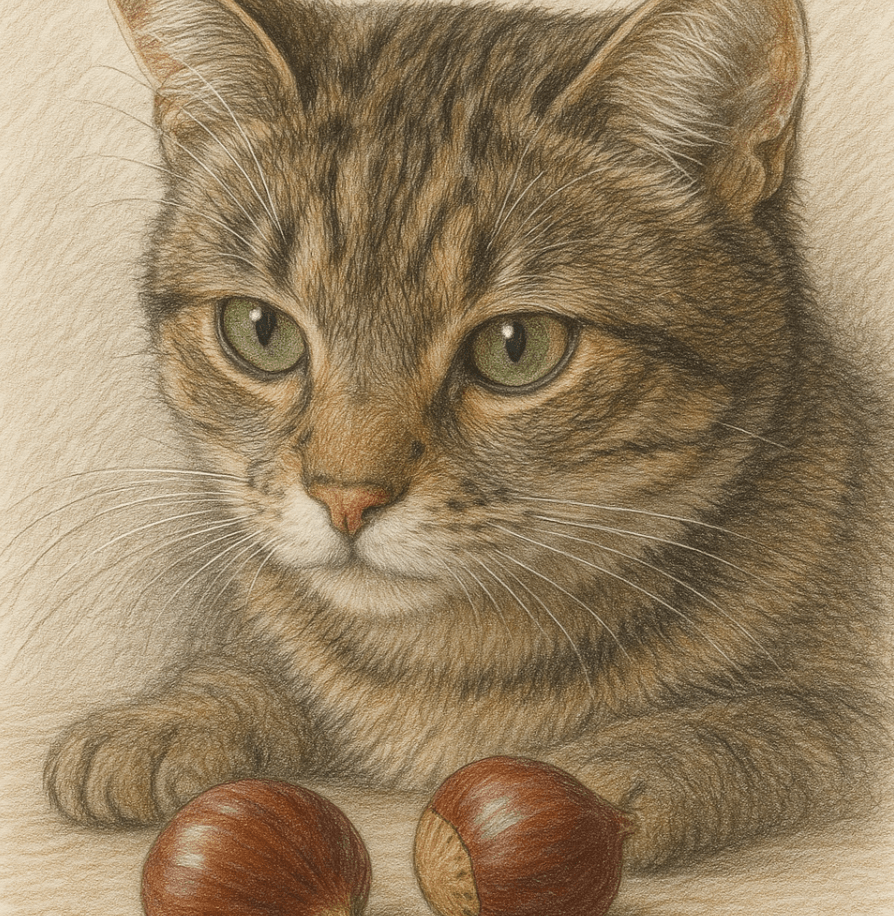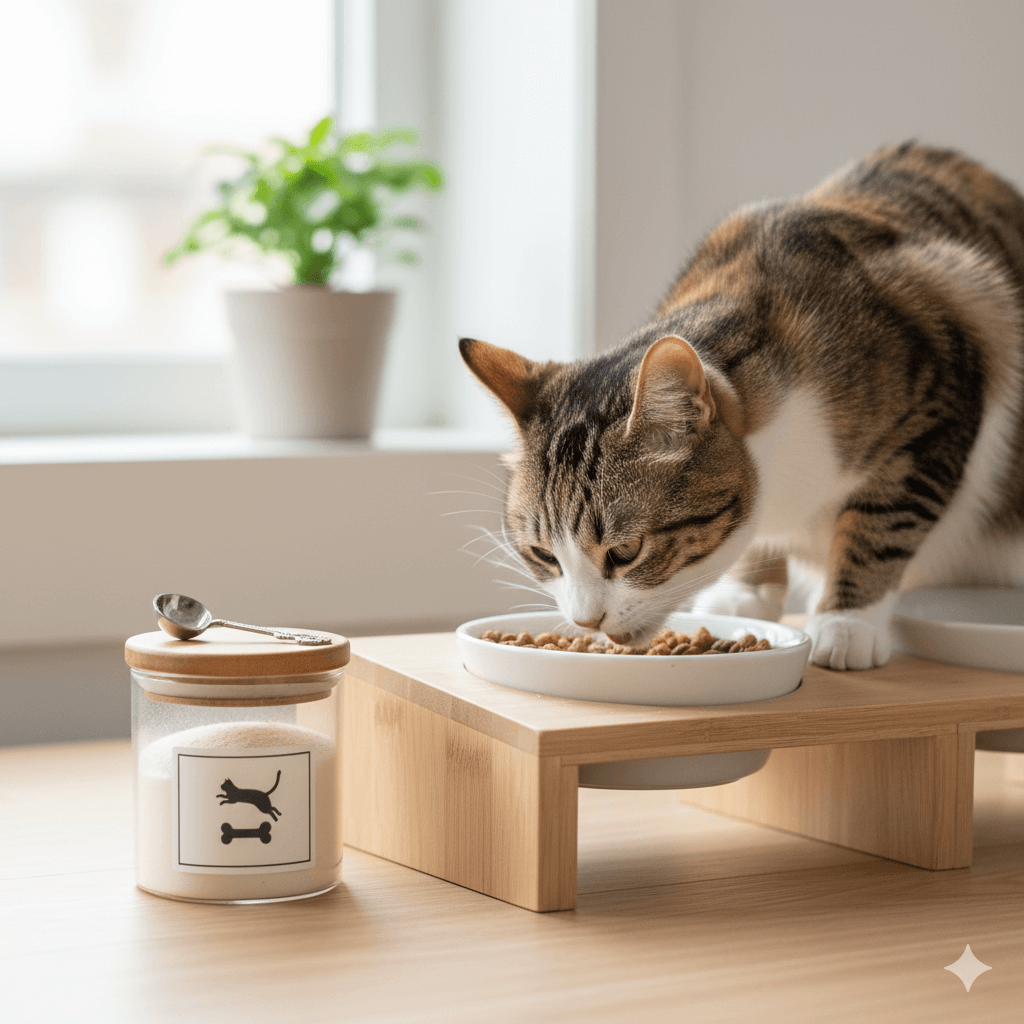Can Cats Eat Chestnuts?
Cats are naturally curious creatures, and their tendency to nibble on unusual things can leave pet owners wondering about the safety of certain foods. One such question that often arises is whether cats can eat chestnuts. While chestnuts are a nutritious snack for humans, it’s important to understand how they might affect our feline friends. Cats have unique dietary needs, and not all human foods are safe for them. In this blog post, we’ll explore whether chestnuts are safe for cats, potential risks, and alternative treats that align with their nutritional requirements. Let’s dive into the details to ensure your cat stays healthy and happy!
Are Chestnuts Safe for Cats?
While chestnuts are not toxic to cats, they are not an ideal food for felines due to their composition and potential risks. Here’s what you need to know before offering chestnuts to your furry friend.
Low Toxicity but Hard to Digest:
Chestnuts are not poisonous, but their high fiber content can be difficult for cats to digest, leading to gastrointestinal upset.Choking Hazards from Hard Texture:
The tough, dense texture of chestnuts poses a choking risk, especially if not prepared properly or given in large pieces.High Calorie Content:
Chestnuts are calorie-dense, which can contribute to weight gain if fed in excess—a concern for indoor cats prone to obesity.Potential Allergic Reactions:
Some cats may develop allergic reactions, such as itching or digestive issues, after consuming chestnuts.No Nutritional Benefits for Cats:
Unlike humans, cats do not benefit from the vitamins and minerals in chestnuts, as their bodies are designed for a meat-based diet.
While chestnuts aren’t inherently dangerous, their lack of nutritional value and potential risks make them an unsuitable treat for cats.
Signs Your Cat May Be Uncomfortable After Eating Chestnuts
If your cat accidentally consumes chestnuts or shows signs of discomfort, it’s crucial to recognize the symptoms early to address any issues promptly.
Vomiting or Diarrhea:
These are common signs of digestive distress caused by the high fiber content in chestnuts.Lethargy or Weakness:
A cat that seems unusually tired or uninterested in activity may be experiencing discomfort.Excessive Drooling:
Drooling can indicate nausea or irritation in the mouth or throat from chewing on chestnuts.Loss of Appetite:
Refusal to eat may signal that your cat is feeling unwell after consuming chestnuts.Abdominal Pain:
Signs like hunching or vocalizing when touched could indicate stomach discomfort or bloating.
If you notice any of these symptoms, contact your veterinarian immediately to rule out serious complications.
Check this guide 👉Can Cats Eat Maple Syrup? Best 7 Expert Tips!
Check this guide 👉Can Cats Eat Quinoa? Best 7 Expert Tips!
Check this guide 👉Can Cats Eat Dandelions? Best 7 Expert Tips!

Safe Treats for Cats | Foods to Avoid Feeding Cats |
|---|---|
Cooked chicken (plain, boneless) | Chocolate |
Plain pumpkin puree | Onions and garlic |
Small amounts of plain yogurt | Grapes and raisins |
Blueberries | Raw dough or yeast-containing foods |
Watermelon (seedless) | Alcohol or caffeine |
How to Safely Introduce New Foods to Your Cat
Introducing new foods to your cat requires caution and careful observation. Follow these guidelines to minimize risks and ensure their well-being.
Consult Your Veterinarian First:
Always seek professional advice before offering unfamiliar foods to your cat.Start with Small Portions:
Begin with tiny amounts to monitor how your cat reacts before giving more.Avoid Seasonings and Additives:
Plain, unseasoned foods are safest, as spices, salt, and sugar can harm cats.Monitor for Adverse Reactions:
Watch for changes in behavior, appetite, or digestion after introducing a new food.Stick to Cat-Friendly Options:
Focus on foods specifically known to be safe and beneficial for feline health.
By following these steps, you can safely experiment with new foods while prioritizing your cat’s health.
Alternatives to Chestnuts for Your Cat’s Diet
If you’re looking for healthy snacks to share with your cat, there are plenty of alternatives that are both safe and nutritious.
Cooked Turkey or Chicken:
Lean meats provide essential protein without unnecessary additives or fats.Plain Pumpkin Puree:
Rich in fiber, pumpkin can aid digestion and is a favorite among veterinarians for upset stomachs.Blueberries:
Packed with antioxidants, blueberries make a tasty and safe occasional treat.Watermelon (Seedless):
Hydrating and refreshing, seedless watermelon is a great option for hot days.Cat-Specific Treats:
Commercially available cat treats are formulated to meet feline dietary needs and preferences.
These alternatives ensure your cat enjoys variety in their diet without compromising their health.
Common Mistakes to Avoid When Feeding Cats Human Foods
Feeding cats human foods can be tempting, but it’s important to avoid mistakes that could harm their health. Here are some pitfalls to watch out for.
Offering Spicy or Seasoned Foods:
Spices and seasonings can irritate a cat’s digestive system and should be avoided entirely.Ignoring Portion Sizes:
Even safe foods can cause problems if given in excessive amounts, leading to obesity or nutrient imbalances.Assuming All “Natural” Foods Are Safe:
Just because something is natural doesn’t mean it’s safe for cats; many plants and nuts are toxic to them.Feeding Dairy Products Regularly:
Despite popular belief, most cats are lactose intolerant, and dairy can upset their stomachs.Neglecting Professional Advice:
Skipping a vet consultation before introducing new foods can result in unintentional harm.
Avoiding these mistakes ensures your cat stays healthy and avoids unnecessary risks.
Nutritional Needs of Cats Explained
Understanding your cat’s dietary requirements is essential for providing proper care. Here’s a breakdown of their key nutritional needs.
High Protein Intake:
Cats are obligate carnivores, meaning they require diets rich in animal-based proteins to thrive.Limited Carbohydrates:
Unlike humans, cats don’t need large amounts of carbs; too many can lead to obesity and diabetes.Essential Fatty Acids:
Omega-3 and omega-6 fatty acids support skin, coat, and overall health.Hydration Through Wet Food:
Cats often don’t drink enough water, so wet food helps maintain hydration levels.Taurine-Rich Diet:
Taurine is a vital amino acid found in meat that supports heart and eye health—if deficient, serious health issues can arise.
Meeting these nutritional needs ensures your cat remains healthy and vibrant throughout their life.
Fun Ways to Treat Your Cat Without Risking Their Health
Rewarding your cat with treats doesn’t have to involve risky human foods. Here are some fun and safe ways to spoil your feline friend.
Interactive Feeding Toys:
Puzzle feeders filled with kibble or treats encourage mental stimulation and slow eating.Homemade Catnip Toys:
Stuff socks or fabric scraps with dried catnip for a simple, safe toy that drives cats wild.Freeze-Dried Meat Snacks:
These treats mimic the taste and texture of raw meat while being shelf-stable and convenient.DIY Cat Grass Garden:
Grow oat, barley, or wheatgrass indoors for a safe way to satisfy your cat’s grazing instincts.Affection and Playtime:
Sometimes, the best “treat” is spending quality time playing or cuddling with your cat.
These ideas allow you to bond with your cat while keeping their health and happiness at the forefront.
Frequently Asked Questions About Cats and Chestnuts
Can cats eat roasted chestnuts?
Roasted chestnuts are still difficult for cats to digest and offer no nutritional benefits, so they should be avoided.
What happens if my cat eats raw chestnuts?
Raw chestnuts are even harder to digest and may cause blockages or stomach upset in cats.
Are chestnuts toxic to cats?
Chestnuts are not toxic, but their high fiber and calorie content can lead to digestive issues.
How much chestnut is safe for my cat?
Even small amounts are not recommended, as chestnuts provide no nutritional value for cats.
What should I do if my cat ate chestnuts?
Monitor your cat closely for symptoms of discomfort and consult your vet if any issues arise.
Prioritizing Your Cat’s Health When It Comes to Chestnuts
While chestnuts are not toxic to cats, they are far from being a suitable snack due to their lack of nutritional value and potential digestive challenges. Understanding your cat’s dietary needs and sticking to species-appropriate foods is key to ensuring their long-term health and happiness. By focusing on safe alternatives and consulting your veterinarian, you can provide your feline companion with treats that are both enjoyable and beneficial. Remember, your cat relies on you to make the best choices for their well-being—so always prioritize their health over curiosity about human foods.
Understanding Bone Supplement for Cats: Best 7 Expert Tips! – Safe, vet-approved guidance for strong feline bones & balanced nutrition.
Bone Supplement for Dogs: Best 7 Expert Tips! – Expert guide to calcium, collagen & bone health for every life stage.
Understanding Can Cats Get Sunburn: Best 7 Expert Tips! – Protect your feline from UV damage with vet-backed prevention strategies.
How to Train a Seizure Alert Dog: Best 7 Expert Tips! – Learn expert-backed steps to nurture natural instincts into reliable, life-saving seizure alerts.




